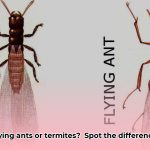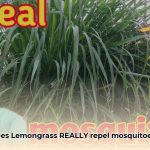Winning the Fly War: Your Buzz-Free Home Guide
House flies are more than just annoying; they can spread germs and contaminate food. This guide provides a practical, step-by-step approach to eliminating these pests, from choosing the right fly spray to implementing preventative measures.
Understanding the Enemy: House Fly Habits and Biology
Before tackling a fly infestation, it’s helpful to understand why flies are attracted to your home. They’re drawn to decaying organic matter like overripe fruit, spilled food, garbage, and pet waste. These serve as both food sources and breeding grounds. Some experts believe that understanding fly behavior can significantly impact control efforts. For example, flies are attracted to light and tend to congregate near windows. This knowledge can inform trap placement strategies.
Fly Spray Selection: Choosing Your Weapon
Fly sprays generally fall into two categories:
1. Insecticidal Sprays: These provide a quick knockdown using chemicals like pyrethrins or pyrethroids, which affect the fly’s nervous system. They’re effective for rapid elimination, but overuse can lead to resistance. There are concerns about potential toxicity, particularly for households with children, pets, or sensitive individuals.
2. Natural Sprays: These often utilize essential oils like peppermint, lemongrass, or eucalyptus to repel flies. They’re generally considered safer and have a pleasant scent, but their efficacy can be variable, and they might require more frequent applications. Some individuals may also be sensitive to specific essential oils.
Choosing the Right Spray: Quick Knockdown vs. Long-Term Control
The best spray depends on your situation. For a heavy infestation, an insecticidal spray offers a quick solution. For ongoing prevention or in homes with young children or pets, a natural spray might be a better choice. Some researchers suggest that integrating natural methods like essential oil diffusers with conventional sprays can be a more effective long-term strategy. Further research is necessary to fully understand the impact of combined approaches.
Fly Spray Comparison Table
| Feature | Insecticidal Spray | Natural Spray |
|---|---|---|
| Effectiveness | Likely High | Possibly Moderate |
| Speed | Fast | Slower |
| Toxicity | Potentially Higher | Generally Lower |
| Residual Effect | Longer | Shorter |
| Cost | Varies | Usually Lower |
Applying Fly Spray Safely: A Step-by-Step Guide
Indoor Application:
- Preparation: Cover food, remove pets and children, and open windows for ventilation.
- Targeted Spraying: Aim directly at flies or their congregating spots. Avoid spraying aimlessly.
- Ventilation: Leave the room for the duration specified on the product label (usually 30 minutes) before re-entering and ventilating thoroughly.
Outdoor Application:
- Identify Hotspots: Locate areas where flies congregate, such as garbage cans or patios.
- Saturate the Area: Apply the spray until it runs off surfaces for optimal coverage and residual effect.
- Reapply as Needed: Frequency depends on the product and weather conditions; follow label instructions.
Safety First! Always read and follow the instructions on the product label. Wear gloves when handling concentrated sprays. Store sprays out of reach of children and pets.
Safety Callout Box
Warning: Fly sprays, even natural ones, can be harmful if misused. In case of accidental ingestion or eye contact, contact a poison control center or seek immediate medical attention.
Beyond Sprays: Integrated Pest Management (IPM)
Fly sprays are just one tool in the IPM arsenal. Combining various methods can be highly effective:
- Fly Traps: Sticky traps, UV light traps, and bait traps offer passive fly control. Place them strategically near windows or areas of high fly activity.
- Fly Swatters: The classic method remains useful for dealing with individual flies.
- Fly-Repelling Plants: Basil, lavender, mint, and marigolds can deter flies with their strong scents. While research on their effectiveness is ongoing, anecdotal evidence suggests they can contribute to a fly-free environment.
Natural Fly Control: DIY Traps & Repellents
Vinegar Trap
- Mix equal parts water and white vinegar in a jar.
- Add a few drops of dish soap to break the surface tension.
- Cover the jar with plastic wrap, secure with a rubber band, and poke small holes. Flies are attracted to the vinegar, enter the trap, and drown.
Essential Oil Repellent Spray
- Mix ¼ cup witch hazel and ¼ cup apple cider vinegar in a spray bottle.
- Add 30-60 drops of eucalyptus, peppermint, or lemongrass oil (or a combination).
- Shake well and spray around areas where flies congregate.
Prevention: Winning the Fly War Before It Starts
The most effective fly control is prevention:
- Sanitation: Maintain a clean kitchen, promptly dispose of garbage, and clean up pet waste.
- Food Storage: Store food in airtight containers.
- Seal Entry Points: Repair screens, caulk cracks, and seal gaps around windows and doors.
Troubleshooting Persistent Fly Problems
- Rotate Sprays: Switch between different active ingredients to prevent resistance.
- Inspect for Breeding Sites: Thoroughly check drains, garbage disposals, and areas around pet food for potential breeding grounds.
- Professional Help: For severe infestations, consult a pest control service. They can identify the source of the problem and recommend targeted solutions.
By combining these methods and staying proactive, you can create a fly-free home and enjoy a pest-free environment. Research on fly control is constantly evolving, so staying informed about the latest strategies can further enhance your efforts.
- Best Airbed Frames for 2024: Your Guide to Comfort & Support - April 20, 2025
- How to Clean WeatherTech Mats: The Ultimate Guide for a Spotless Car - April 20, 2025
- How to Clean Poop Out of Carpet: A Step-by-Step Guide - April 20, 2025










